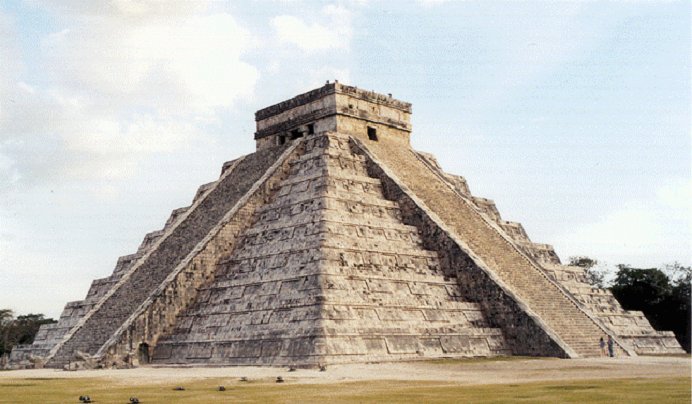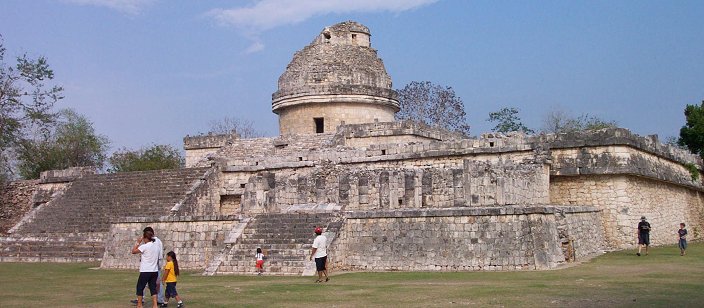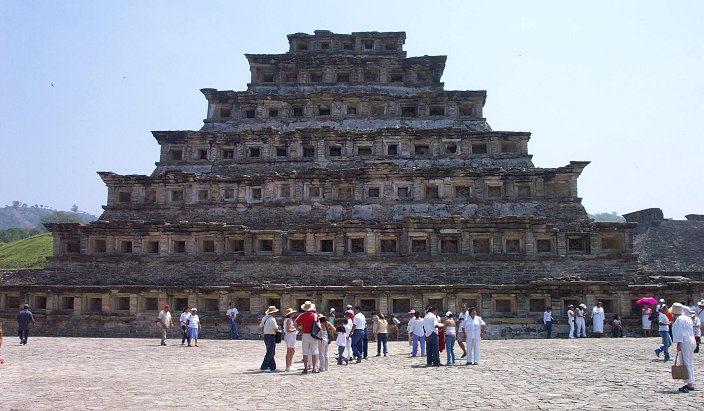SOLVED
Unlocking the Mysteries of the Inhabitants,
Languages and Religions of the World
Astrology
If we are to follow all the branches of pagan religion down the trunk we will find their roots firmly planted in Babylon. There we shall find the seed that sprang up into every corrupt form of religion that exists today. This seed was germinated at Babel and began with a tower whose top was dedicated to the heavens.
This claim is visibly documented in the study of history and archaeology, but ultimately, it is verified in the infallible record of the Bible. When investigating the evidence, it is clearly revealed that the source of all astrology and idolatry originated in the Tigris-Euphrates valley, where Babylon is located. From that location it spread out to cover, “the face of all the earth” (Genesis 11:8).
As the religion of Babel developed, the worship of the sun, moon, stars and planets became popular. Each of them represented a god and, “To interpret the will of the gods, [the Babylonians] mapped the sky into the 12 signs of the zodiac and studied the paths of the planets Jupiter, Mars, Venus, Mercury, and Saturn” (Compton's Encyclopedia, Vol. 4, p. 11, 1976).
From Babylon, this corrupt religion was carried around the world on the backs of the nations when God confused their language and scattered them abroad. Since that time, various forms of the zodiac have been found among the nations of antiquity. The Egyptians and Chinese practiced astrology and divided the sky into twelve divisions, but they assigned different names and symbols to their signs.
The Maya also possessed a zodiac of some kind, which is preserved in the “Paris Codex”. Many scholars believe that it illustrates various beasts depicting the constellations on the elliptic of the sun and planets against the background of the fixed stars.
The Aztecs also paid much attention to the host of heaven and its movements. They believed that the sun and the moon and the, “planets were also gods: and so were the major stars. The groups of stars through which the sun passed were the houses of 13 gods. These were very like our 12 signs of the zodiac … Thus there was always a relationship between the earthly events and the shapes in the sky where the gods had their places” (Encyclopedia of World Mythology, New York: Galahad, 1975, p. 71).
The names of their gods may have been different (due to the different languages formed at Babel), but the tales behind them were often similar. For example, in the ancient world, a Great Bear represented the constellation of Ursa Major where the Big Dipper resides. In North America, the Indians had several tales about this constellation, and it was also of a Great Bear.
“Some North American Indian tribes … pictured bears in Ursa Major, and the nearby constellation Ursa Minor, as evidenced by the names frequently used to describe them, Okuri and Paukuawa - both meaning “bear”. But in Iroquois mythology, all bears once had long tails. The earthly bear lost its tail attempting to show it off, using the tail to fish through a hole in an iced over lake. The bear's tail froze and fell off, and now all earthbound bears mimic this ancient bear with its stumpy tail. A Blackfoot Indian legend tells of an elder daughter of a large family. The daughter fell in love with a grizzly bear. Her father was furious and ordered her brothers to kill the bear. But this was a magical bear, and before the bear died he gave some of his magic to his bride. She then turned herself into a grizzly bear, and in retaliation she destroyed her entire village, killing her mother and father. She began chasing her eight brothers and sisters, but one brother had magic of his own. He shot an arrow into the sky, and instantly all eight children followed it to become stars. The seven oldest children became the seven stars forming the Big Dipper. The youngest child was frightened, and she can be seen as the dim star Alcor, huddling close to the star Mizar. This was before any contact with Europeans. (http://www.starshine.com/frankn/astronomy/constellations.asp?constell=uma)
Some of the pyramids in Mesoamerica were also dedicated to the host of heaven. At Teotihuacan, the pyramids there were dedicated to the Sun, Moon and Stars. In the Yucatan Peninsula, at the ruins of Chichen Itza, there is the impressive pyramid called “El Castillo”. This pyramid has the Mayan civil and ritual calendar incorporated into its design.
The Mayan year consisted of 365 days, just like ours, however, eighteen months were observed, and their life cycle lasted 52 years. Each side of the pyramid had 91 steps making 364 with the top platform totaling 365 steps. Also, “fifty-two panels on the terraces symbolize the number of years it takes for the solar ritual year to complete the cycle known as the Calendar Round; and on each of the four sides, the nine terraces are divided by a stairway to make eighteen sections, representing the number of months in the Maya year.” (The Ruins of Time, David Adamson, p. 60, 1975)
The astrological calendar of the Mayans was not only built into their temple-tower it was intricately woven with their ritualistic religion to signal festivals and other important days.

Just a short walk from the pyramid El Castillo, the Mayans also had an observatory known as “El Caracol”. This is the oldest observatory in the world. It is associated with the vernal equinox of the moon, the spring and fall equinoxes of Venus, and other astronomical events sacred to Kukulcan, the feathered serpent god.

Another pyramid located northeast of Mexico City, located at El Tajin, has 365 recessed cubicles. It is believed by some that each of the 365 niches contained an idol representing a god for every day of the year.

While astronomy is a valid science involving the study of the universe, astrology is no science at all, for its purpose in observing the heavens is to predict the will of the gods and the future, usually through a priest or a medium, who is in contact with the spirit world. This practice is called divination and the practitioner thereof was called an “observer of times” (Deut. 18:9-12, 2 Chronicles 33:1-7). This was a practice of the Gentile nations and is strictly condemned in the Word of God (Leviticus 19:26).
It appears that many years later, the Gentiles at Galatia, who had come to Christ for pardon and cleansing of sin, needed to be reminded by Paul of the grave danger of slipping back into this occult practice. “Howbeit then, when ye knew not God, ye did service unto them which by nature are no gods. But now, after that ye have known God, or rather are known of God, how turn ye again to the weak and beggarly elements, whereunto ye desire again to be in bondage? Ye observe days, and months, and times, and years. I am afraid of you, lest I have bestowed upon you labour in vain” (Galatians 4:8-11).
Today many feel that the horoscopes found in almost every tabloid around the world are harmless forms of entertainment. However, let us not be deceived, for their roots are bound up in Babylonish occultism, and many would not want to be entertained in this manner unwittingly.
| Copyright © 2018 AccordingtotheScriptures.org. All rights reserved. | Home | Our Purpose | Statement of Faith | Contact | Subscribe |
